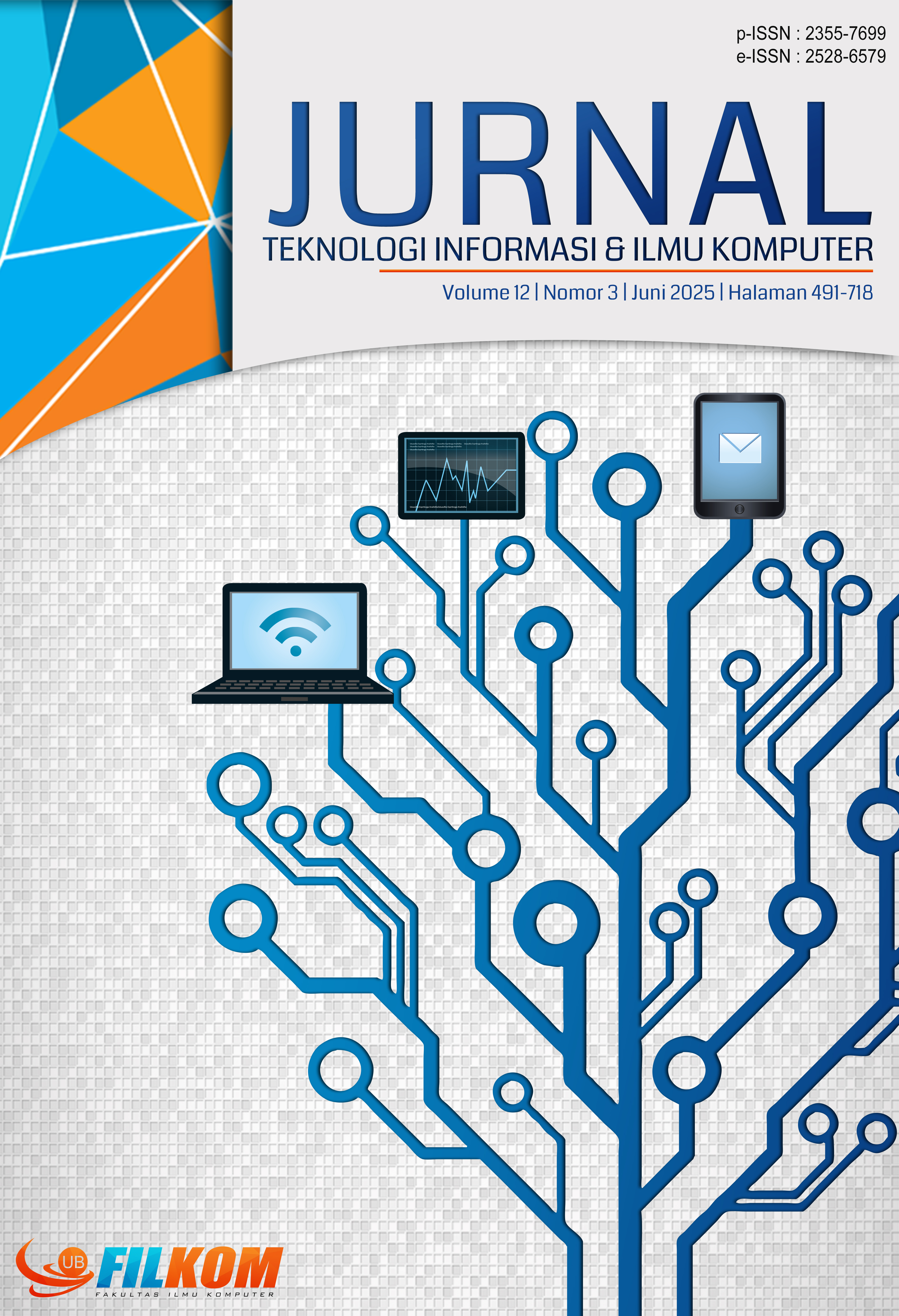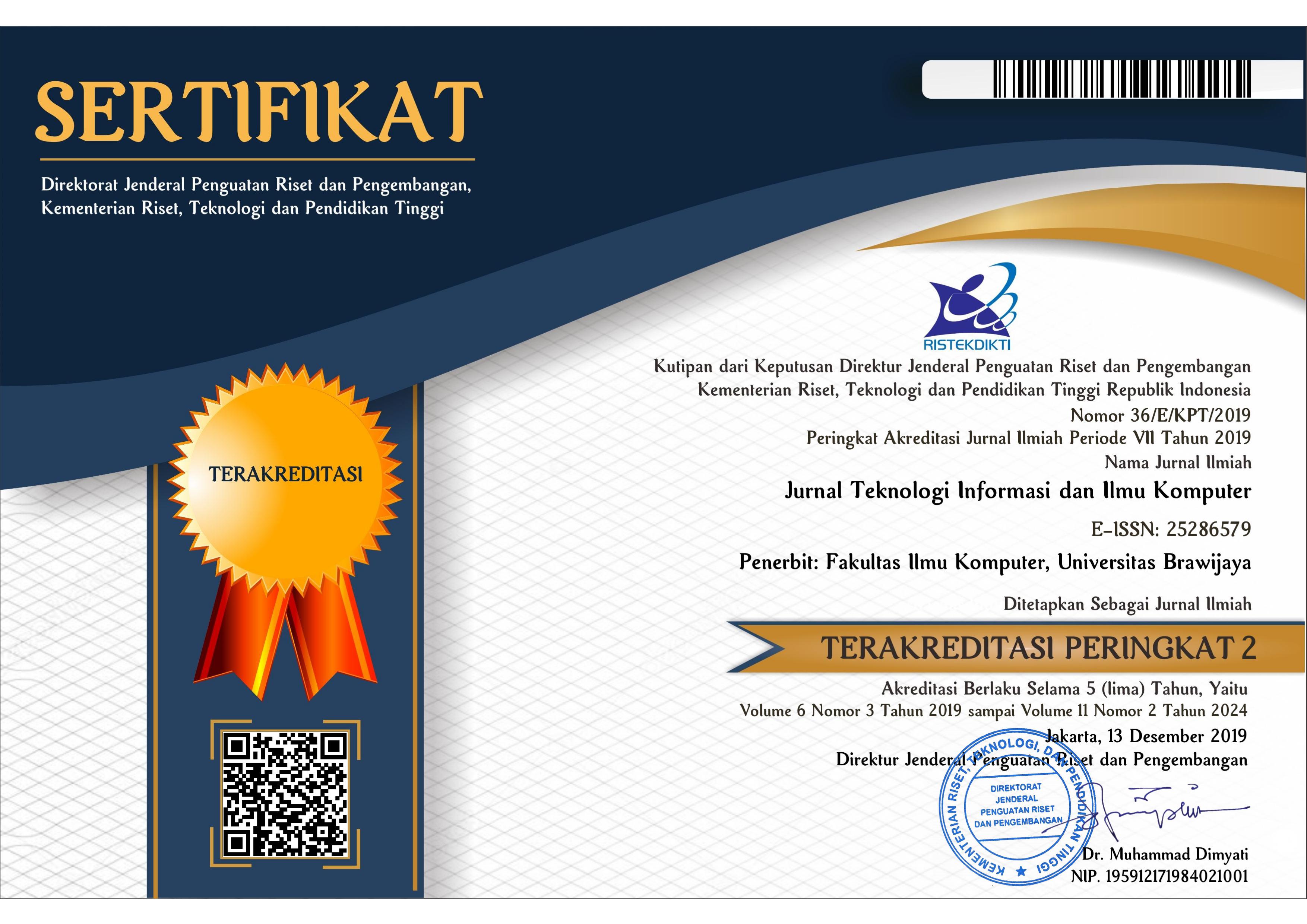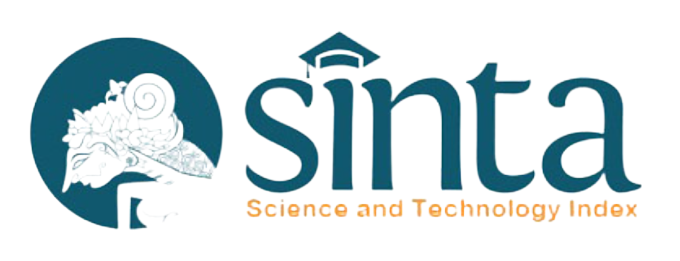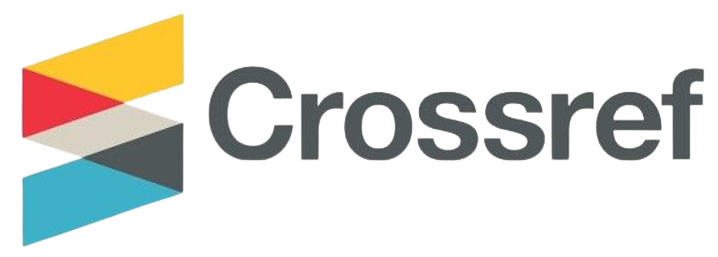Mesin Catur Berbasis Neural Network Menggunakan Long Short Term memory (LSTM)
DOI:
https://doi.org/10.25126/jtiik.2025129445Kata Kunci:
chess engine, chess moves prediction, long short term memory (LSTM), universal chess interface (UCI), average centipawn loss (ACPL)Abstrak
Catur diperkirakan memiliki sekitar 1043 kemungkinan posisi. Angka tersebut jauh melampaui kemampuan komputasi komputer yang ada saat ini, sehingga mengembangkan sebuah mesin catur dengan mempertimbangkan seluruh kemungkinan posisi dianggap tidak memungkinkan. Saat ini, penggunaan Neural Network pada pengembangan mesin catur sedang mengalami peningkatan dan telah membawa hasil yang menjanjikan sejak pertama kali diperkenalkan oleh AlphaZero milik Google DeepMind pada tahun 2017. Penelitian ini bertujuan untuk membawa potensi pendekatan baru pada ranah pengembangan mesin catur berbasis Neural Network dengan memperkenalkan mesin catur Deeplefish yang melakukan gerakan berdasarkan keluaran model Long Short Term Memory (LSTM). Menggunakan lebih dari 57.000 pertandingan yang terbagi menjadi 1.200.000 posisi, model dilatih untuk memprediksi langkah berikutnya oleh putih untuk sebuah rangkaian gerakan yang diberikan. Model meraih loss sebesar 3,01 dan Average Centipawn Loss (ACPL) sebesar 219 pada data uji. Deeplefish meraih 2 kemenangan, 72 kekalahan, dan 10 hasil seri pada tahap pengujian. Hasil yang tidak memuaskan ini dapat disebabkan oleh subjektivitas data terhadap cara berpikir pemain, menghasilkan kurangnya pola gerakan yang signifikan untuk dipelajari oleh model.
Abstract
Chess has been estimated to have around 1043 possible positions. This number surpasses the computing ability of any computer available, therefore, building a chess engine that considers every possible position is deemed impractical. Currently, the use of neural network in chess engine development is on the rise and has been delivering promising results since the introduction of Google DeepMind’s AlphaZero in 2017. This research aims to bring a new potential approach to the field of neural network based chess engine development by introducing Deeplefish chess engine that uses a Long Short Term Memory (LSTM) model as move generator. Trained on more than 57.000 games broken down into more than 1.200.000 positions, the model is trained to predict the next move played by white for a given sequence of moves. The model achieved a loss of 3.01 and an Average Centipawn Loss (ACPL) of 219 on the validation set. Deeplefish achieved 2 wins, 72 losses, and 10 draws on the testing, showing a lack of board and contextual awareness. This unsatisfactory results are likely due to the subjectivity of the data to the player’s way of thinking, resulting in lack of significant move pattern to be learned by the model.
Downloads
Referensi
ANON. 2024. Lichess accuracy metric. [online] Lichess.org. Available at: <https://lichess.org/page/accuracy> [Accessed 20 June 2024].
DAVID, O.E., NETANYAHU, N.S. and WOLF, L., 2016. DeepChess: End-to-end deep neural network for automatic learning in chess. In: Artificial Neural Networks and Machine Learning – ICANN 2016. Cham: Springer International Publishing. pp.88–96.
KLEIN, D., 2022. Neural Networks for Chess. arXiv [cs.LG]. https://doi.org/10.48550/ARXIV.2209.01506.
MAHARAJ, S., POLSON, N. and TURK, A., 2022. Chess AI: Competing paradigms for machine intelligence. Entropy (Basel, Switzerland), [online] 24(4), p.550. https://doi.org/10.3390/e24040550.
MEHTA, F., RAIPURE, H., SHIRSAT, S., BHATNAGAR, S. and BHOVI, B., 2020. Predicting chess moves with multilayer perceptron and limited lookahead. Journal of Engineering Research and Application, 10(4), pp.05-08. doi: 10.9790/9622-10040105088
METZNER, C., SCHILLING, A., TRAXDORF, M., TZIRIDIS, K., SCHULZE, H. and KRAUSS, P., 2022. Classification at the accuracy limit -- facing the problem of data ambiguity. arXiv [cs.LG]. https://doi.org/10.48550/ARXIV.2206.01922.
PANCHAL, H., MISHRA, S. and SHRIVASTAVA, V., 2021. Chess moves prediction using deep learning neural networks. In: 2021 International Conference on Advances in Computing and Communications (ICACC). IEEE.
SANTOSA, R.D.W., BIJAKSANA, M.A. and ROMADHONY, A., 2021. Implementasi algoritma long short-term memory (LSTM) untuk mendeteksi penggunaan kalimat abusive pada teks bahasa Indonesia. eProceedings of Engineering, 8(1).
SELLE, N., YUDISTIRA, N. and DEWI, C., 2022. Perbandingan Prediksi Penggunaan Listrik dengan Menggunakan Metode Long Short Term Memory (LSTM) dan Recurrent Neural Network (RNN). Jurnal teknologi informasi dan ilmu komputer, [online] 9(1), p.155. https://doi.org/10.25126/jtiik.2022915585.
SHANNON, C.E., 1950. XXII. Programming a computer for playing chess. The London Edinburgh and Dublin Philosophical Magazine and Journal of Science, [online] 41(314), pp.256–275. https://doi.org/10.1080/14786445008521796.
Unduhan
Diterbitkan
Terbitan
Bagian
Lisensi
Hak Cipta (c) 2025 Jurnal Teknologi Informasi dan Ilmu Komputer

Artikel ini berlisensiCreative Commons Attribution-ShareAlike 4.0 International License.

Artikel ini berlisensi Creative Common Attribution-ShareAlike 4.0 International (CC BY-SA 4.0)
Penulis yang menerbitkan di jurnal ini menyetujui ketentuan berikut:
- Penulis menyimpan hak cipta dan memberikan jurnal hak penerbitan pertama naskah secara simultan dengan lisensi di bawah Creative Common Attribution-ShareAlike 4.0 International (CC BY-SA 4.0) yang mengizinkan orang lain untuk berbagi pekerjaan dengan sebuah pernyataan kepenulisan pekerjaan dan penerbitan awal di jurnal ini.
- Penulis bisa memasukkan ke dalam penyusunan kontraktual tambahan terpisah untuk distribusi non ekslusif versi kaya terbitan jurnal (contoh: mempostingnya ke repositori institusional atau menerbitkannya dalam sebuah buku), dengan pengakuan penerbitan awalnya di jurnal ini.
- Penulis diizinkan dan didorong untuk mem-posting karya mereka online (contoh: di repositori institusional atau di website mereka) sebelum dan selama proses penyerahan, karena dapat mengarahkan ke pertukaran produktif, seperti halnya sitiran yang lebih awal dan lebih hebat dari karya yang diterbitkan. (Lihat Efek Akses Terbuka).















